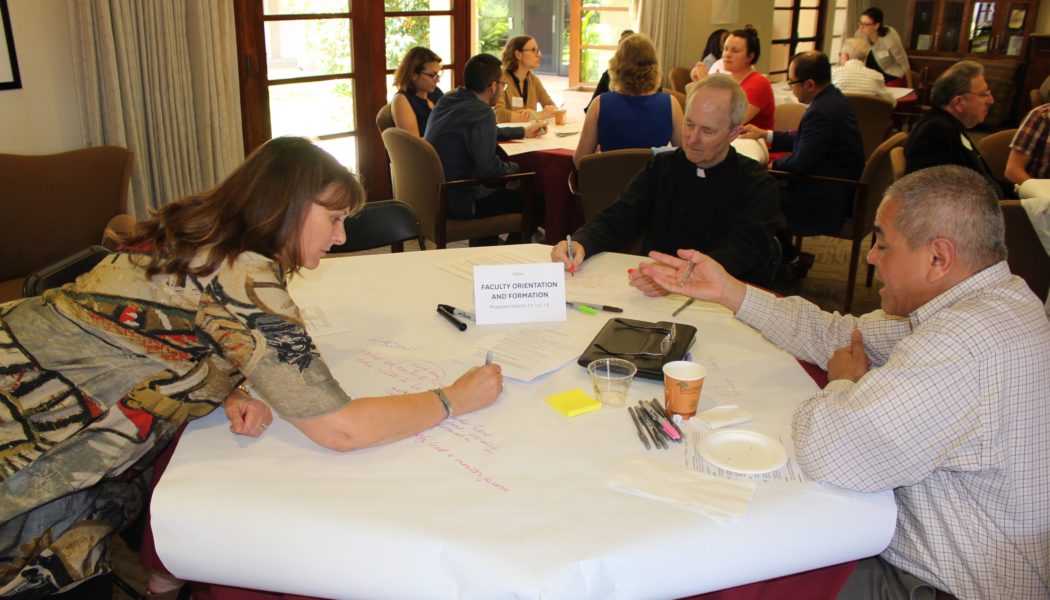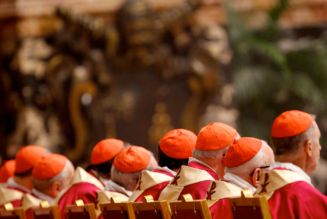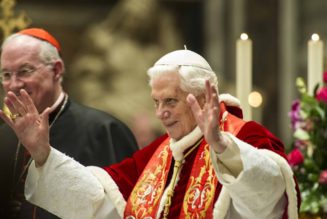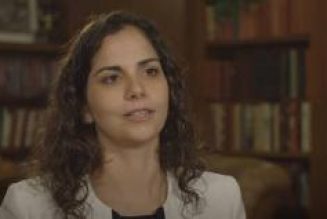BY CHRISTOPHER KACZOR
Leaders in Catholic higher education and beyond have long spoken of “mission drift,” something that happens when the core values and goals inherent in an institution’s mission are neglected. If we can be more specific about the various forms that mission drift takes, we might be better situated to recognize it and to consider possible remedies.
Jesuit institutions tend to define their mission in terms of the service of faith, the promotion of justice, and the education of the whole person. With this in mind, I propose that we can distinguish five senses of mission drift: inattention, reduction, dilution, segregation, and discrimination. I further propose that we can identify five corollary remedies: mindfulness, comprehensiveness, depth, integration, and affirmation.
Mission inattention vs. mission mindfulness
Mission inattention, perhaps the most common form of mission drift, takes place when an institution’s mission is forgotten in practice. Two examples of this are when no one thinks to ask a candidate for a faculty position how they would contribute to mission, and when the “best practices” of secular institutions are uncritically adopted, regardless of whether such practices enhance or detract from mission.
By contrast, I want to suggest that mission mindfulness involves making no major administrative decision without asking, “Does this action enhance our mission?” Mission mindfulness further takes into account the institution’s values and goals in all areas, from hiring faculty to the shape of student life, even in the speakers invited to campus. One way to frame the issue is to ask, if the institution formally abandoned its Catholic and Jesuit mission, what, if anything, would change? If nothing would change in a particular area of the institution, then that area is already functionally dead in terms of contributing to the mission.
Mission reduction vs. mission comprehensiveness
Mission reduction typically leaves unmentioned the service of faith, passes lightly through the education of the whole person, and focuses almost exclusively on the promotion of justice. This is a wide and easy road to mission drift.
Since no reasonable person is opposed to the promotion of justice, using promotion of justice solely to define a college or university as Catholic or Jesuit is virtually meaningless. Take this example from a state university’s website: “As a community of students, faculty and staff, we at California State University San Marcos are committed to respecting and reflecting the diversity of our region within a context of social justice.” If commitment to justice is all that is needed to connote a Jesuit mission, it will be easy even for state institutions to claim a Jesuit mission.
As a remedy for such mission reduction, I propose a mission comprehensiveness that emphasizes all three parts—faith, justice, and education of the whole person. Under mission comprehensiveness, job candidates, as well as faculty being evaluated for tenure or promotion, might be asked to articulate how they would or do contribute to all three pillars of the mission, not just that one part of the mission that all persons of goodwill already accept. Further, no student should graduate from a Jesuit university without a basic understanding—whether they agree is up to them—that faith and reason are in harmony according to the Catholic tradition.
Mission dilution vs. mission depth
Mission dilution takes place when faith, justice, and education of the whole person are understood in empty ways. “The mission means whatever you want it to mean,” a dean once told me. Such mission dilution transforms the red wine of a distinctive mission into the water of the least common denominator.
What does mission dilution look like? Think, for example, of the libertarian capitalist, the totalitarian communist, and the faithful Catholic, all of whom cheer for justice in the abstract, but have radically different understandings of it in the particular. In the same vein, if the promotion of justice as understood in a college or university has no meaningful content, it cannot meaningfully advance mission.
When mission dilution has set in, the rich tradition of Catholic thought on justice is flattened out or neglected in the curriculum. Further, questions about ultimate meaning and about the content of faith are subordinated to career preparation. The exploration of the age-old Christian tradition of engagement between faith and reason devolves into an anodyne conversation that simply affirms that faith is not the opposite of thinking. Finally, when mission dilution has set in, the education of the whole person—a person with a soul and a vocation, called by God to live a good and virtuous life—gives way to the transmission of knowledge with little concern for the cultivation of wisdom and the promotion of spiritual and moral growth. Such a context allows for a certain kind of “caring for students,” but not one that has any particular purchase on mission in the Catholic and Jesuit sense.
By contrast, I propose that institutions adopt a program of mission depth which encompasses faith, justice, and the education of the whole person. An institution embracing mission depth not only has a strong campus ministry program and plenty of volunteer service opportunities, it also finds ways to ensure that these things are integrated with the curriculum such that they can have a powerful impact on all students—such that, alongside students’ academic studies, the riches of the spiritual life, particularly Catholic spiritual life, and a dedication to serving others provide opportunities for growth in virtue. Mission depth, in this sense, becomes a means for ensuring that the mission can make a true and lasting imprint on students, far beyond their narrow intellectual and professional development.
Mission segregation vs. mission integration
Colleges and universities are composed of various units, such as academic departments, student services, and athletics. Mission segregation happens when people and their particular units act in a way that presupposes that the institution’s Catholic and Jesuit mission is someone else’s job: “I’m not in campus ministry or in the theology department. They take care of that.” Even within a department—philosophy, for example—with a natural connection to the mission, someone might think, “Well, we’ve got my colleague who teaches the Jesuit philosopher Bernard Lonergan, so we’ve got that box checked.”
By contrast, an institution with a vibrant Catholic and Jesuit mission does not practice mission segregation, but mission integration. What does mission integration look like when it comes, for example, to research and teaching? Novelist and sociologist Andrew Greeley put it this way:
Catholic colleges should strive to do what they are either uniquely or best qualified to do—explore the Catholic tradition. … At the research level, there should be (not exclusive) emphasis on Catholic topics—for example, Catholic social theory, the effects of Catholic education, American Catholic history, Catholic literature, Catholic spirituality, the history of Catholic art and worship, 20th-Century Catholic thought, Vatican II, Catholic ethnic groups, the spirit of Irish (name the ethnic group of your choice) Catholicism. … My contention is not that this is the only kind of research that should be done at Catholic universities, only that Catholic research should be a rich opportunity that the universities would want to pursue.
Such a research focus should be complemented with a teaching focus, not just in theology, but in all departments. That includes not only the arts and humanities, but also the STEM disciplines and professional schools. Though the connections may not be immediately obvious to all, the full range of disciplines can be in fruitful conversation with the Catholic intellectual tradition. In the end, if research and teaching simply mirrors that of a typical private or state schools, it is hard to see how an academic unit is serving mission.
It is important to note that this approach can be open to people of any faith or no faith, so long as the individual has an understanding of and respect for the Catholic intellectual tradition. At the same time, without a substantial number of researchers and teachers who know and love the Catholic intellectual tradition in every academic department and school, an institution will be unable to engage with that tradition in an integrated way.


As evidenced in the dialogical engagement between Loyola Marymount University colleagues, Robbin D. Crabtree, dean of the Bellarmine College of Liberal Arts, Randy Roche, S.J., director for the Center for Ignatian Spirituality, and Herbert Medina, then associate dean of the Frank R. Seaver College of Science and Engineering, and now acting president and provost at the University of Portland (above), staff and faculty colleagues of good will from any wisdom tradition, if any, can engage with the Catholic intellectual tradition. Photo courtesy of the Academy of Catholic Thought and Imagination at Loyola Marymount University.
Mission discrimination vs. mission affirmation
A final sense of mission drift involves discrimination against those within a college or university who profess religious faith. Indeed, sociologist George Yancey has argued that “politically—and, even more so, religiously—conservative academics are at a distinct disadvantage in our institutions of learning, threatening the free exchange of ideas to which our institutions aspire and leaving many scientific inquiries unexplored.”
What does mission discrimination look like? Historian James Hitchcock noted that, “People have been denied tenure, lost their jobs, were never hired in the first place, or were otherwise penalized for upholding Church teaching.” Beyond these things, mission discrimination happens when whole classes of people are simply marginalized for what they believe or study. It also happens when colleagues and coworkers make cruel jokes or snide remarks about religious beliefs, practices, and leaders. For example, I have been repeatedly called a “fundamentalist,” a term I consider marginalizing, stigmatizing, and ostracizing, by a university administrator even after I made requests never to be called this offensive term. When an otherwise qualified person with the religious beliefs of Pope Francis is not hired or is looked upon as outlier or an oddity to be excluded from important positions, mission discrimination has taken place and equal opportunity has been denied on the basis of religion.
To avoid mission discrimination, a university should practice mission affirmation in hiring, promoting, and retaining otherwise qualified faculty who hold religious, and particularly Catholic, beliefs and commitment. Such faculty contribute to diversity of thought on campus rather than simply reinforcing what a recent faculty climate survey at Loyola Marymount University called a “majority secular liberal point of view.”
Conclusion
If an institution is to avoid mission drift, it requires a positive focus on mission mindfulness (vs. inattention), comprehensiveness (vs. reduction), depth (vs. dilution), integration (vs. segregation), and affirmation (vs. discrimination). Jesuit institutions that take care to ensure that their mission is comprehensively applied, consistently instantiated, and authentically engaged with the Catholic intellectual and spiritual tradition need not worry about mission drift.
Jesuit universities that do not, however, will sooner rather than later cease being Jesuit universities.
Christopher Kaczor is a professor of Philosophy at Loyola Marymount University.
The featured cover photo (above) is courtesy of Sebastien LE DEROUT via Unsplash.
Join Our Telegram Group : Salvation & Prosperity









